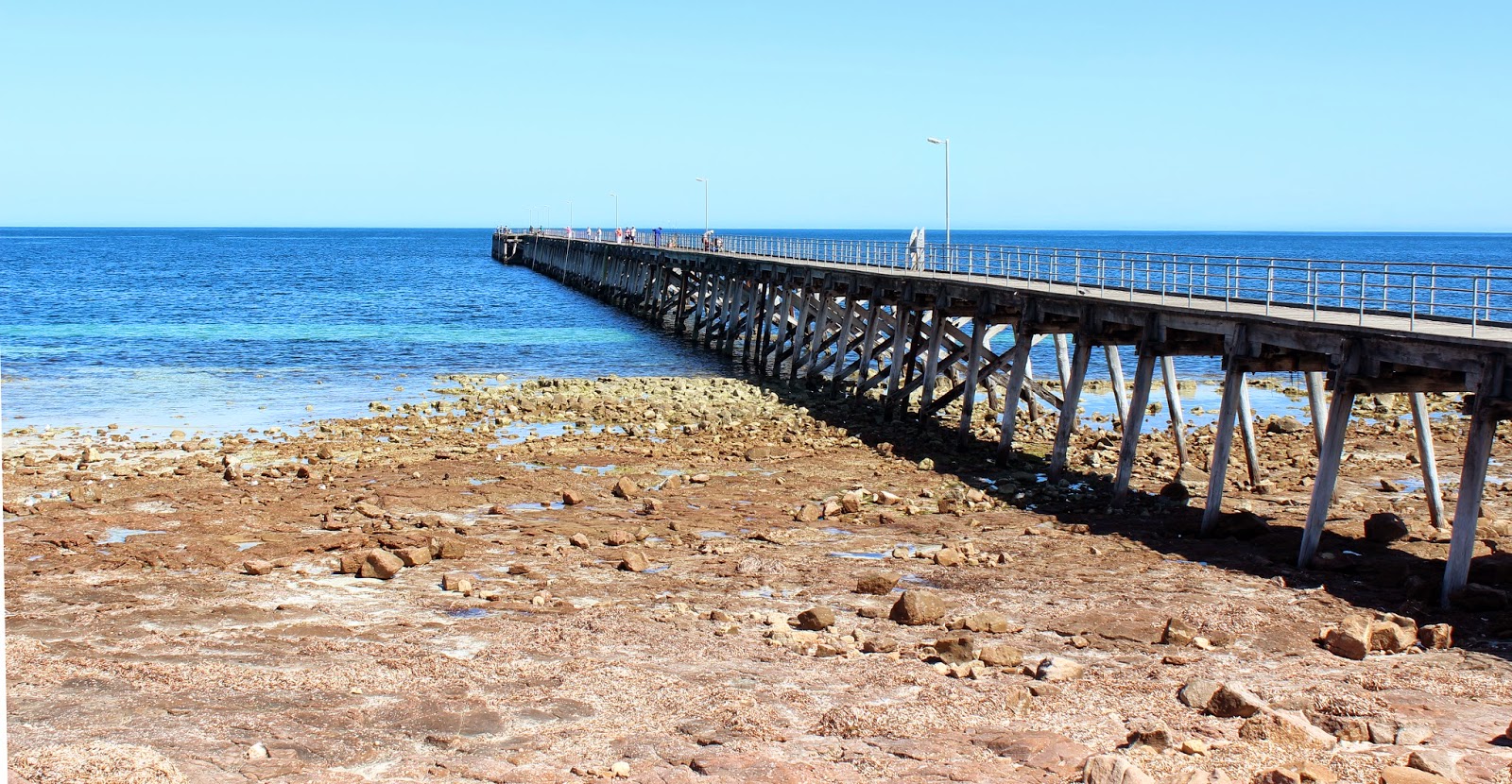The return ferry journey across Backstairs
Passage brings us back to the mainland, and we are soon at Victor Harbour to
rendezvous with Kay Field and her mum (Beryl). Before meeting them, we set up
the van, then take a short journey back to Langhorne Creek and the Bleasedale
winery to stock up on their quaffable 2011 red blend. Back at Victor Harbour, it is drinks with Kay and
Beryl, then we all head off to the Beach Shack for dinner.
From Victor Harbour, a slow drive through
the eastern suburbs of Adelaide to again escape to the open highway takes us
to Dublin for lunch in the local Lions Park and on to Wallaroo on the east
coast of the Spencer Gulf. The selection of the North Beach caravan park as
opposed to the Office Beach caravan park provides an ideal beachfront outlook,
so much so, that we take the opportunity to extend our stay from two to four nights as an
absolute beachfront site becomes available. Betty ventures on to the beach and
into the shallows at first light and snares a couple of whiting.
Exploring the area, we travel to Moonta Bay
and Port Hughes (all part of the Copper Coast), and encounter crabbers and
fisherpersons at both jetties. At Port Hughes we both comment that the
majority of people fishing are female.
News abounds of blue swimmer crab around
the Wallaroo jetty and this demands a visit to the local fishing equipment
shop to purchase a crab net. Armed with garfish heads from the fish cleaning
shed at the caravan park we join a handful of others working for a catch. We
are reliably informed that the jetty becomes overcrowded here at weekends and
this quickly depletes the crab stocks, so crabbing on a Monday may not be as
productive as later in the week. We soon have two legal size crabs (the small
fellas being rightly tossed back) and we are happy to add these to our menu as
an entrée to the whiting.
With a beachfront site, this is definitely
somewhere we would return to for an extended stay.































